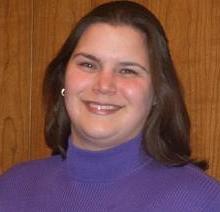Two Severe Storms, Two Different Safety Directions
(Inside Science) -- Tornadoes and flash floods can happen at the same time. But the safety instructions for what you’re supposed to do during each one often contradict one another.
Now meteorologists and social scientists are working together to identify when these two severe weather events occur together and how best to communicate that information to the public.
Tornadoes and flash flooding are two separate severe weather events. But when the conditions are right, they can occur at the same time.
Jennifer Henderson, a CIRES Postdoctoral Fellow with the Western Water Assessment, at the University of Colorado, Boulder said, “TORFF is tornado plus flash floods, and it’s when there are two threats that exist at the same time in the same space, or at least the warnings do."
But the safety information that viewers receive from their local national weather service office or broadcast meteorologists during these two severe weather events can be conflicting.
For tornadoes, you should seek safety in a sturdy structure or underground. But if a flash flood is coming, the last place you want to be is where fast-moving water might threaten your life.
Erik Nielsen at Colorado State University said, "For tornadoes, you’re supposed to go to the lowest central room of your home, structure, or wherever you might be, but for flash flood, you’re supposed to retreat to higher ground. And so, if you’re under both threats at the same time, you could potentially pick incorrectly and put yourself in excessive danger."
"The thing that I think I’ve learned is that the atmosphere is extremely complex, that we, as meteorologists, every day try really hard to predict it as best we can. But it is so unbelievably complex to really nail down everything in enough time in advance to really get the word out to warn the people,” said Nielsen.
"One of the newer ways that the forecasters are communicating these threats is through social media. And so, there are researchers in the social science community who are trying to understand what kinds of information people on social media are picking up -- what is it that you most respond to, what is it that you share the most often, and what’s the most compelling in terms of making you want to take some sort of action, whether it’s share the information or seek more information or take some sort of action,” said Henderson.
While Henderson and Nielsen continue to study the physical and social science of tornado and flash flood events, their goal remains to identify severe weather threats as early as possible, and communicate that information quickly to the public.

